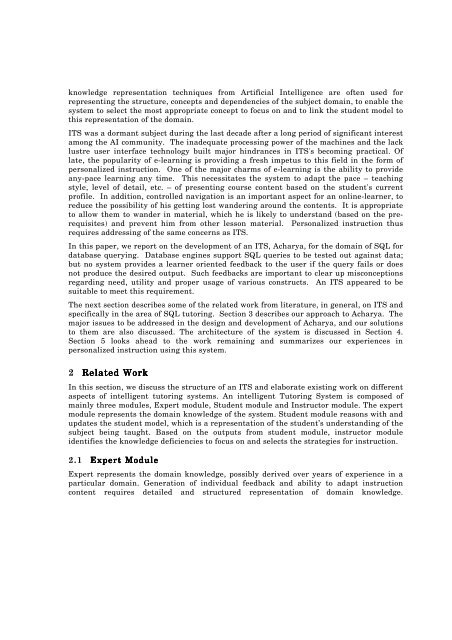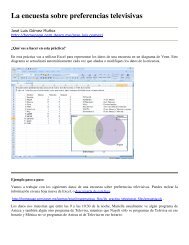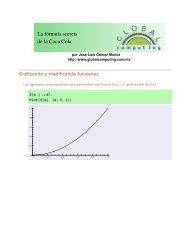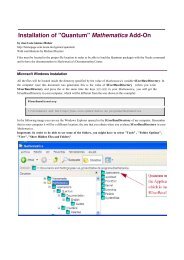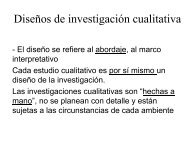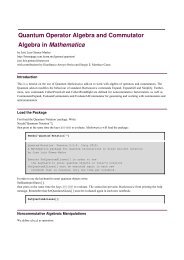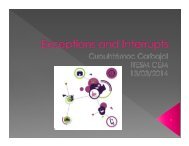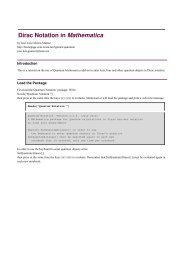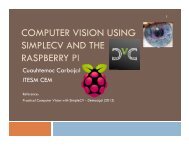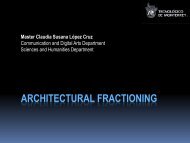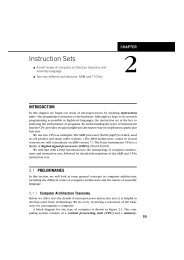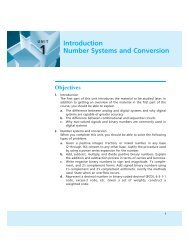Acharya: An Intelligent Tutoring Environment for ... - C-DAC Mumbai
Acharya: An Intelligent Tutoring Environment for ... - C-DAC Mumbai
Acharya: An Intelligent Tutoring Environment for ... - C-DAC Mumbai
Create successful ePaper yourself
Turn your PDF publications into a flip-book with our unique Google optimized e-Paper software.
knowledge representation techniques from Artificial Intelligence are often used <strong>for</strong>representing the structure, concepts and dependencies of the subject domain, to enable thesystem to select the most appropriate concept to focus on and to link the student model tothis representation of the domain.ITS was a dormant subject during the last decade after a long period of significant interestamong the AI community. The inadequate processing power of the machines and the lacklustre user interface technology built major hindrances in ITS's becoming practical. Oflate, the popularity of e-learning is providing a fresh impetus to this field in the <strong>for</strong>m ofpersonalized instruction. One of the major charms of e-learning is the ability to provideany-pace learning any time. This necessitates the system to adapt the pace — teachingstyle, level of detail, etc. — of presenting course content based on the student's currentprofile. In addition, controlled navigation is an important aspect <strong>for</strong> an online-learner, toreduce the possibility of his getting lost wandering around the contents. It is appropriateto allow them to wander in material, which he is likely to understand (based on the prerequisites)and prevent him from other lesson material. Personalized instruction thusrequires addressing of the same concerns as ITS.In this paper, we report on the development of an ITS, <strong>Acharya</strong>, <strong>for</strong> the domain of SQL <strong>for</strong>database querying. Database engines support SQL queries to be tested out against data;but no system provides a learner oriented feedback to the user if the query fails or doesnot produce the desired output. Such feedbacks are important to clear up misconceptionsregarding need, utility and proper usage of various constructs. <strong>An</strong> ITS appeared to besuitable to meet this requirement.The next section describes some of the related work from literature, in general, on ITS andspecifically in the area of SQL tutoring. Section 3 describes our approach to <strong>Acharya</strong>. Themajor issues to be addressed in the design and development of <strong>Acharya</strong>, and our solutionsto them are also discussed. The architecture of the system is discussed in Section 4.Section 5 looks ahead to the work remaining and summarizes our experiences inpersonalized instruction using this system.2 Related WorkIn this section, we discuss the structure of an ITS and elaborate existing work on differentaspects of intelligent tutoring systems. <strong>An</strong> intelligent <strong>Tutoring</strong> System is composed ofmainly three modules, Expert module, Student module and Instructor module. The expertmodule represents the domain knowledge of the system. Student module reasons with andupdates the student model, which is a representation of the student’s understanding of thesubject being taught. Based on the outputs from student module, instructor moduleidentifies the knowledge deficiencies to focus on and selects the strategies <strong>for</strong> instruction.2.1 Expert ModuleExpert represents the domain knowledge, possibly derived over years of experience in aparticular domain. Generation of individual feedback and ability to adapt instructioncontent requires detailed and structured representation of domain knowledge.


